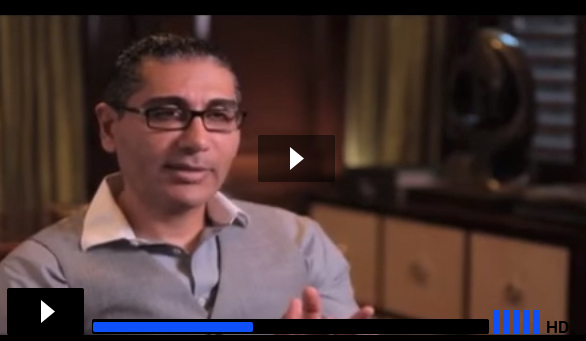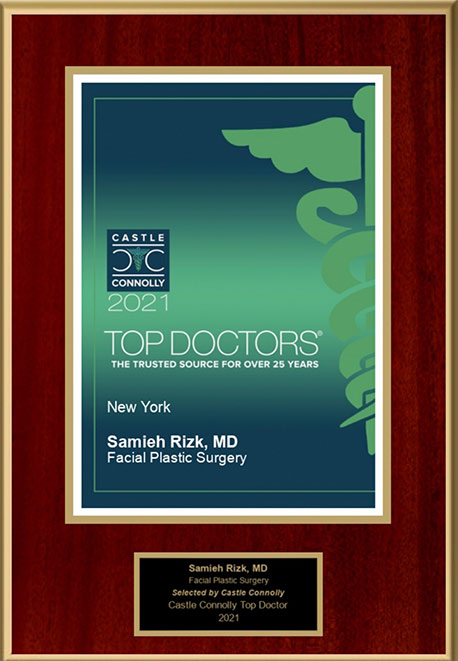Septoplasty Surgery – The Procedure
Septoplasty surgery is type of a facial plastic surgery performed to straighten the septum and clear the airway. The procedure’s benefits are both functional (i.e. better breathing) and cosmetic (better nasal appearance). Septoplasty can also help improve several health issues.
Why Patients Get Septoplasty
First and foremost, septoplasty is performed to return proper function to the nasal airways. Nasal obstruction can cause breathing problems and eventually lead to obstructive sleep apnea, a potentially dangerous health condition. Patients with obstructive sleep apnea experience shallow, obstructed breathing, and most wake up throughout the night without even realizing it. Sleep apnea prevents the body from entering deep sleep and can cause significant fatigue during the day. Septoplasty can eliminate sleep apnea by straightening the septum and clearing the nasal airways.
Another reason patients undergo septoplasty is to correct a crooked nasal bridge. This often requires straightening both the bone and cartilage. If the bones are deviated to one side, controlled breaks may be necessary. Advanced suturing techniques can be used to correct deviated cartilage. Spreader grafts and other cartilage grafting may be necessary to straighten the midline and achieve symmetry. It is important to note that patients with a fractured nose may need to wait several months before receiving treatment for a crooked nose.
When a patient’s nasal obstruction is caused by something other than a deviated septum, a different procedure such as turbinoplasty may be performed.
What Happens the Morning of the Procedure?
Patients undergoing septoplasty will receive instructions for the morning of surgery. It is important to check in to the surgical facility as instructed (on time) to allow enough time to prepare properly. Patients should bring any paperwork and forms the surgeon the surgeon has provided to fill out. It is important to wear loose, comfortable clothing that can be removed without pulling it over the head. It is also a good idea to leave jewelry and valuables at home. Patients should avoid wearing make-up or applying any lotions or creams to the face the day of surgery. Anything along these lines should be washed off with soap and water prior to arriving at the surgical facility.
Patients are usually advised to avoid taking any medications unless the surgeon and anesthesiologist have instructed them to do so.
Prior to surgery a nurse usually starts an intravenous infusion (IV) line and often provides a sedative to help the patient feel comfortable going into the procedure.
The Procedure
Before the surgery begins, the anesthesiologist will administer anesthesia. Technically, one of three types of anesthesia may be used: local, twilight anesthesia or general anesthesia. However, most surgeons strongly prefer that patients undergoing septoplasty be under general anesthesia. This ensures that the airway is protected throughout surgery and prevents the patient from swallowing and aspirating blood. (Swallowing blood causes pneumonitis, not to mention nausea and vomiting following surgery.) General anesthesia is also advantageous because it prevents the patient from being awake or aware while the nose is being operated on.
The procedure itself usually lasts about 1-2 hours. Today the most experienced septoplasty surgeons use a 3D telescope to view the internal nasal structures. This allows the surgeon to make less alterations and achieve better results, with shorter recovery times.
During septoplasty the surgeon lifts the mucus membrane above the septum and separates it from the underlying structures. The septum is straightened, and any bone and cartilage that are obstructing airflow are removed before repositioning the membrane in its original position.
To minimize trauma to the nasal tissues and reduce the recovery time, small internal incisions will be made and small instruments will be used to alter the tissues.
If the turbinates are inflamed, turbinoplasty may be performed concurrently with septoplasty, again to improve airflow.
Internal splints may be placed for a few days to support the newly altered nasal structures. Most patients remain at the clinic for a few hours before being cleared to go home (accompanied and driven by a friend or family member).
If you are having septoplasty, the surgeon will provide you with postoperative instructions. When septoplasty is performed as a standalone procedure there usually isn’t excessive swelling or bruising. You should expect some congestion and impaired nasal breathing for a matter of weeks, during which time strenuous activity must be avoided. However, you should be able to return to most daily activities within a few days to a week.









